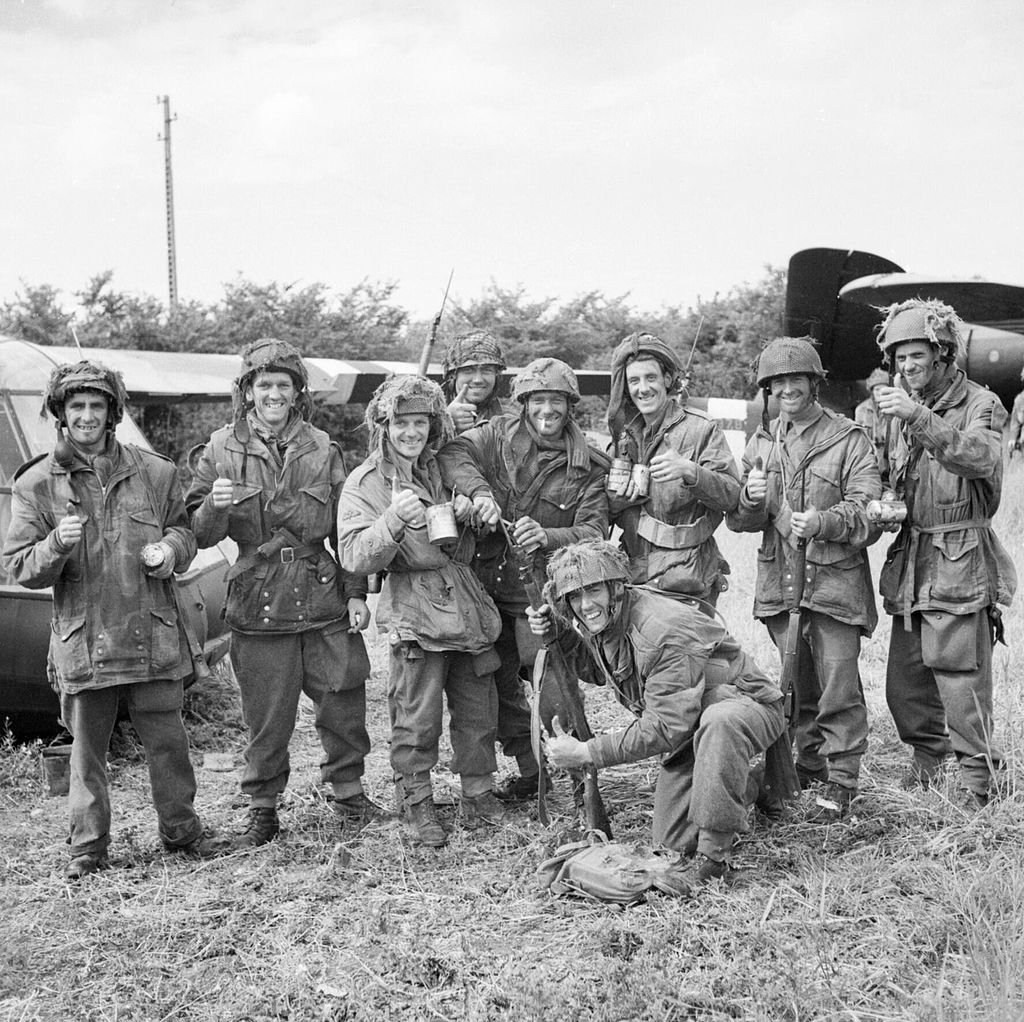Teach This Poem is a weekly series featuring a poem from our online poetry collection, accompanied by interdisciplinary resources and activities designed to help K-12 teachers quickly and easily bring poetry into the classroom.
Members of 12th Parachute Battalion, 5th Parachute Brigade, 6th Airborne Division, enjoy a cup of tea after fighting their way back to their own lines near Ranville after three days behind enemy lines, 10 June 1944.

Courtesy of the Imperial War Museum. Photograph B 5349.
The following activities and questions are designed to help your students use their noticing skills to move through the poem and develop their thinking about its meaning with confidence, using what they’ve noticed as evidence for their interpretations. Read more about the framework upon which these activities are based.
- Warm-up (whip around or quick write): What thoughts do you associate with comradeship in war?
- Whole-class Research: What is a hedgerow? Where is Vierville? Where is Normandy? What happened there during World War II?
- Before Reading the Poem (individual writing and pair share): Write down what you notice in the photograph “Members of the 12th Parachute Battalion.” How are the people standing with each other? What are they wearing? What emotions do you see in their faces? In their positions? How do you think they feel about each other? What is your evidence? Share your observations and thoughts with a partner.
- Reading the Poem: Read the poem silently, then write down the words, phrases, and structures that jump out at you.
- Listening to the Poem (enlist two volunteers to read the poem aloud): Listen as the poem is read aloud twice and write down any additional words and phrases that jump out at you.
- Small-group Discussion: Share four or five words, phrases, or structures you noticed in the poem that you thought were important. Make sure someone in your group keeps a list of these. What do these words, phrases, and structures suggest to you about the emotions of the soldiers in the poem?
- Whole-class Discussion: Do you notice a pattern in how the poem is structured? Where in the poem does this pattern break, and what is happening in the poem at this point? Why do you think the structure may have changed here? What might be the emotions these lines are meant to convey? Compare and contrast the emotions of the soldiers in the photograph and the soldiers in the poem.
- Extension for Grades 7-10: In your small groups, create a dialogue between two soldiers who are going out to fight together. Use this dialogue as a script for a skit and present this skit to your classmates.
- Extension for Grades 11-12 (research activity): Learn more about the 506th and 513th paratroop regiments. After looking at the photograph, reading the poem, and conducting this research, write an essay about the changes people might undergo when they go to war. What do you think and feel about this?
More Context for Teachers: In her essay “Poetry of Disaster,” the poet Nicole Cooley writes, “A poetry of disaster relies on fragments…. When we think about writing about disaster, we envision telling coherent stories of events—but the poetry of disaster has a different relation to narrative. The only way these events can be spoken of or voiced is through broken forms.” Read more.
